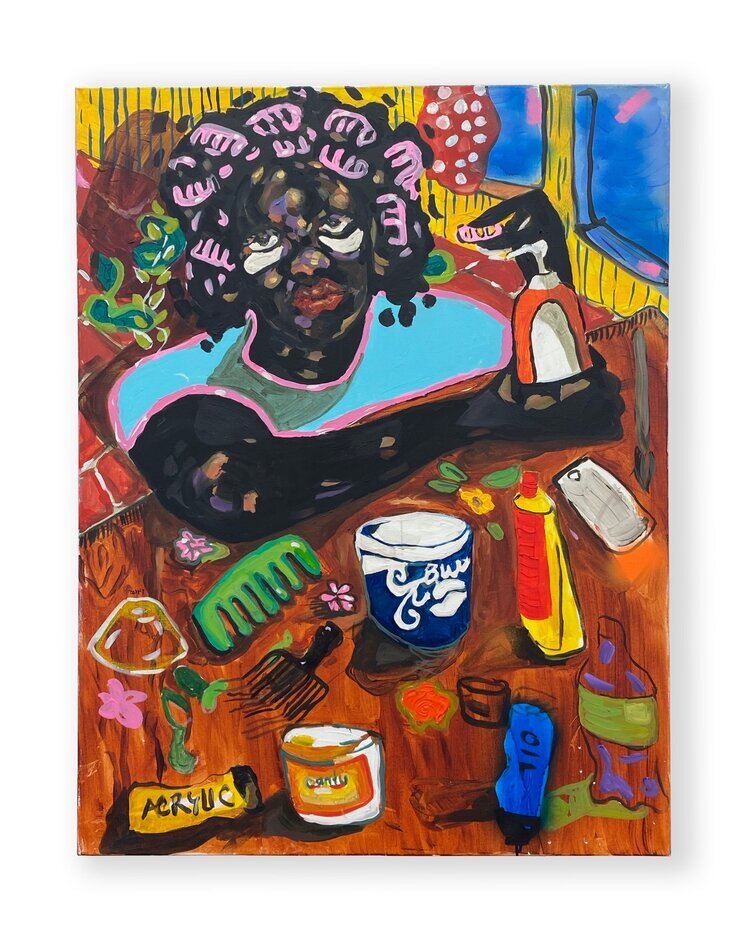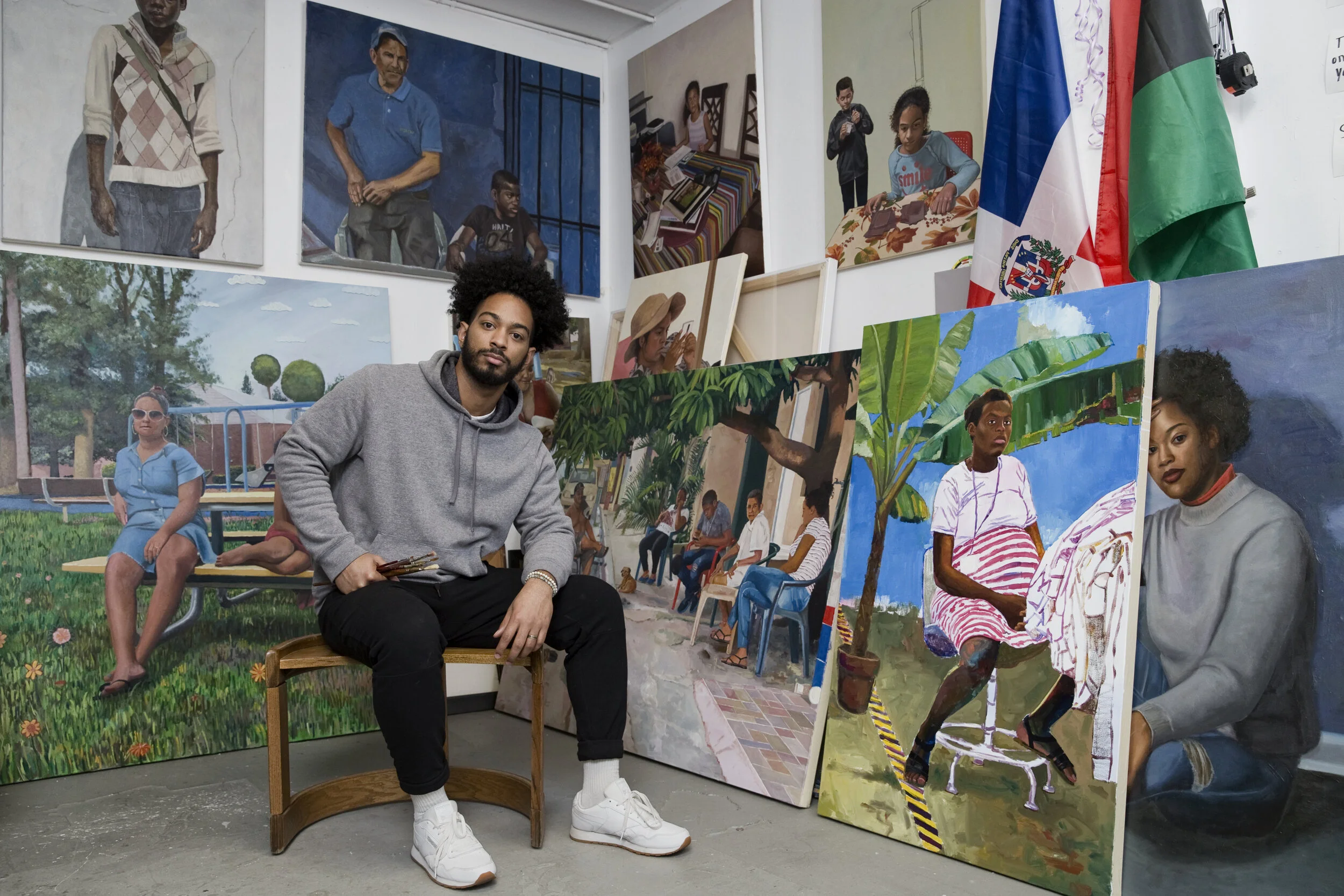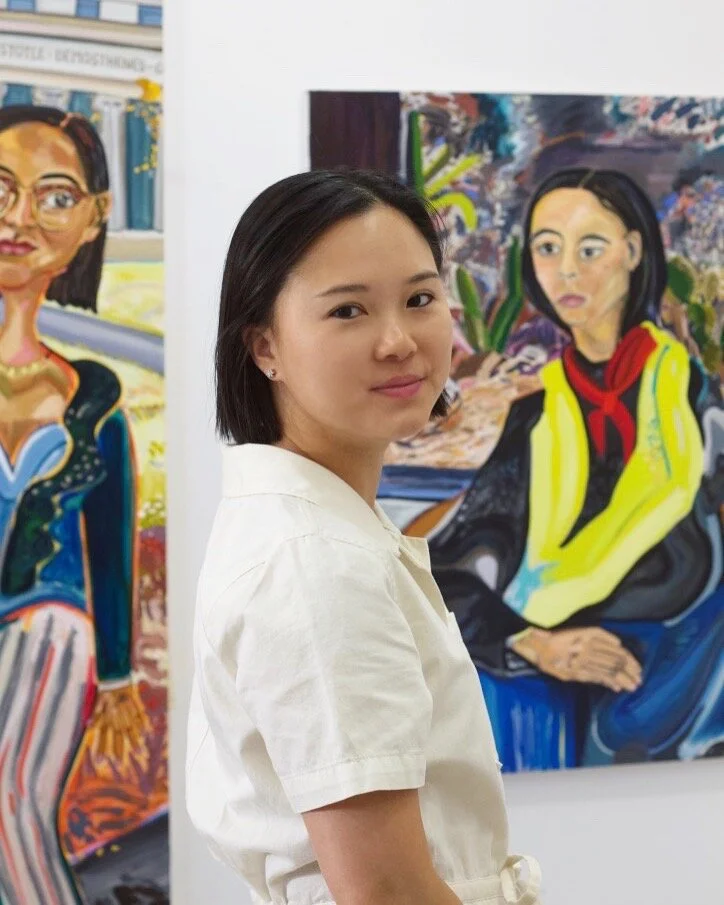Art Convo with Patricia Renee' Thomas: Painting Black Femme Womxn in all of Our Glory
Portrait by Emily Reynolds.
In a generous and rich conversation, Philly-based artist Patricia Renee’ Thomas unearths really dope and engaging gems about her captivating oil-based pantings, navigating productivity in quarantine, and prioritizing radical self-care.
How are you feeling at this moment?
Over the past months, I’ve been in a state between exhaustion and optimism. Like many right now, we are tired, we are emotional, worrisome, and in an overall mindless auto-mode. It goes without saying that most of us are experiencing dread. But, regardless of this, I can’t shake my feelings of hope. I mean, as we fight for change and reform, there needs to be hope in it, no matter how much sneaky doubt infiltrates. I hold that positivity closely.
How have you balanced self-care and your art practice during these quarantined months?
There has been a back and forth between action and relaxation these months. Initially, I was more concerned with productivity than my mental health, even after having opened two solo shows this year in New York and Philadelphia. I foolishly asked myself, how do I sustain an oil-painting practice in a hot third floor, poorly ventilated West Philly walk-up? The answer was that I couldn’t, but I was still motivated to produce, so I exclusively made drawings, wrote, and caught up on some reading. Painting alone in the park and making self-portraiture in my apartment served as a form of meditation, and there was room for bliss. However, after weeks of consecutive protests I made the choice to practice radical self-care. I valued isolation, took a break from making work, and prioritized my mental state, eventually returning to making small thangs.
“For too long I’ve been convinced to be ashamed of my body, and this nearly goes without saying, so my womxn live without these restrictions and are free to exist in my imagined worlds, and I view my practice as an opportunity for remedy.”
Olivia, oil on canvas, 2019. Courtesy of the artist.
How do you translate your intimate feelings about your hair, and how Black womxn feel about our hair onto your canvases?
My previous body of work titled Grapejuice at Kapp Kapp Gallery (PHL) took on the laborious process of presentation and representation as it pertains to my hair, our hair. When I braid my own head up, it takes hours, eight or nine hours. This is so intimate for one to do to themselves, for someone to do for another, and is a representation of radical care. It feels the same to me- making a painting, whether it’s one of myself or one of another, the preparation of the paint and the canvas is the same as the preparation and presentation of a fresh finished look.
Black womxn deserve to have evidence of our existence, and that’s what these paintings and drawings are. In a way, it was my ode to a process I held dearly. I just wanted to give my take on the unique, brave, and irreplaceable experience of self-construction, and self depiction through a tangible form.
I also love the intimacy that your Black femme subjects have with their body. Your subjects can be totally nude, topless, dressed in lingerie, or fully clothed. Can you talk about this?
I like to have my figures be comfortable in their environment yet engaged with the viewer, and this was my way of giving power. Whether clothed or unclothed, they’re in control. The viewer is a witness to their Black, femme existence--and they’re lucky for it. For too long I’ve been convinced to be ashamed of my body, and this nearly goes without saying, so my womxn live without these restrictions and are free to exist in my imagined worlds, and I view my practice as an opportunity for remedy. We are owed an escape. That’s some of the glory of painting and that’s why I love it.
I also like to play with the visual meaning of a garment. Most colors are intentional in addition to my love for millennial pinks and hot yellows, but I like to allow the garments to compliment the figure; skin is beautiful and complex, and I like to include multiple colors in skin in addition to Black. I let these imagined flesh colors play with the chosen clothing, leaving the viewer to be dazzled by the contrast of the image.
“Black womxn deserve to have evidence of our existence, and that’s what these paintings and drawings are.”
Roller Set, Mousse, oil on canvas, 2020. Courtesy of the artist.
I know times are uncertain, but feel free to share upcoming projects or other projects that you're excited about.
I’m in my second year of graduate school at the University of Pennsylvania, so right now I’m looking forward to that thesis show. Other shows in New York and LA are up in the air as we navigate our current world, but they’re coming soon!








